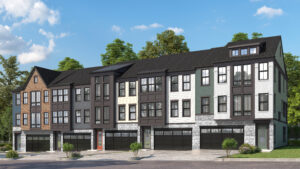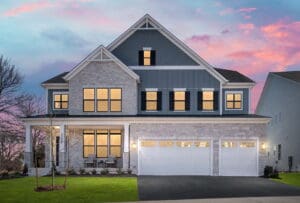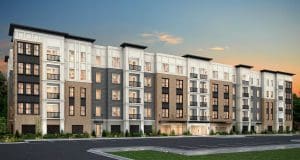The following is a personal history of the land that our Wharton’s Bluff community was built upon. It was written by Jo Anne Barnes who previously owned the property. Thank you to Jo Anne for the wonderful write-up!
My maternal grandparents, George and Henrietta Hickman, purchased the fishing resort, known to locals as Old Landing Farm, around 1936. In addition to the large, 17-room lodge house built on the bluff, with 10 bedrooms and a wrap-around porch on three sides, the property included 40 acres of land, 25 of which were rented every year to a local farmer.
The fishing resort was built around 1910 by a group of sportsmen (10-20, many of whom were teachers) from the Pottstown PA area. During the Depression, the men defaulted on the mortgage payments and a Pottstown bank foreclosed on the property. My great-grandfather Levin Hickman owned a small farm on what is now Hickman Lane, a mile or so up Iron Branch Rd. toward town, that abutted Old Landing Farm. He got wind of the foreclosure and wrote to his son George (my grandfather) suggesting that he contact the bank to see what they would take for it. My grandfathered made an inquiry and learned the bank was asking around $10,000. He wrote them in late 1934 and offered $3,600, which the bank immediately rejected. A year or so later, in early 1936, the bank wrote my grandfather telling him that if he was still interested, they would accept his offer. And that’s how the property came into my family.
At the time, my grandfather was a sales manager for American Standard Company (selling central heating furnaces and radiators), managing the San Francisco office. He and my grandmother had two children — my uncle George Hickman Jr., and my mother Margaret Hickman (Barnes). They knew they would be transferred back East at some point and thought Old Landing Farm would make a nice vacation home and eventually give them a place to retire. When they were transferred to Northern New Jersey around 1938, they began coming down to Old Landing several times a year for weekends and longer stays, and then permanently when they retired in 1952. Dozens of family and friends, from Baltimore (my grandmother Henrietta’s home town), New Jersey and the Midwest would descend on my grandparents at Old Landing every summer until my grandmother’s death in 1988 at age 90. My parents, especially my dad, loved Old Landing. Then, as one of seven kids, even after we were on our own, my siblings and I would come regularly, with our parents and our kids, for family get-togethers.
After my grandmother passed away, the question of what to do with Old Landing was a problem. Everyone in the family loved it, but no one was interested in living in it or even using it for more than a couple weeks a year. The huge house, with its ten bedrooms, was far more house than anyone wanted to take on. Right after my grandmother passed away, the house and land were appraised at $1 million for estate tax purposes. However, with the recession of 1991, property values around Millsboro fell off sharply. By the time the estate was settled, the best offer my Uncle George and my mother received for the property was $575,000. Given my uncle’s lack of interest in owning the property, my mother bought him out. My mother set up an LLC that took title to the property, with one of my brothers to manage it. We had the house boarded up and for the next 12 years continued to rent out to local farmers the 25 acres that abutted the highway. In 2003, with property values starting to skyrocket at the beach resorts, Millsboro began to attract buyer interest as well. In the Spring of that year, we decided to test the market and list Old Landing with a realtor.
From then on, things happened very quickly. It was truly a buyers’ frenzy. I may be off somewhat on the bidding process, but as I recall, we first listed the property for $900,000. Within a few days, my brother received a call from the realtor with an offer of $1.2 million, and then later the same day, an offer of $1.5 million. With my mother’s and his sibling’s blessing, he accepted it. It was contingent, of course, on the results of the perk tests and other zoning issues being resolved. Then, a few months later, in the fall of 2003, as the river front was being surveyed, one or two Eagles’ nests were discovered. By early 2004, the land proved to be all build-able, but the eagles’ nests required that so much land surrounding them be set aside to protect them. Thus, with the amount of acreage that would be build-able having been reduced, the sales price was reduced, I believe to around $1.25 million, with the contract due to be signed in a few months. Sometime soon after this, the Eagles’ nests were shot down! The eaglets in the nest were all killed and the parent eagles flew away. That’s when Gov. Ruth Ann Minner held a press conference on the property to publicize this terrible act of destruction to what was at the time an endangered species. The local papers and even the News Journal ran stories about it, with speculation as to who did it. There was an investigation, which of course delayed the contract settlement for six months. I’m not sure the police ever determined who had shot down the nests. Anyway, the sale closed in the Fall of 2004. I believe the land was flipped once or twice in the couple years after we sold it. Then, around 2006 or so, I learned that the property was going to be developed as Wharton’s Bluff.










